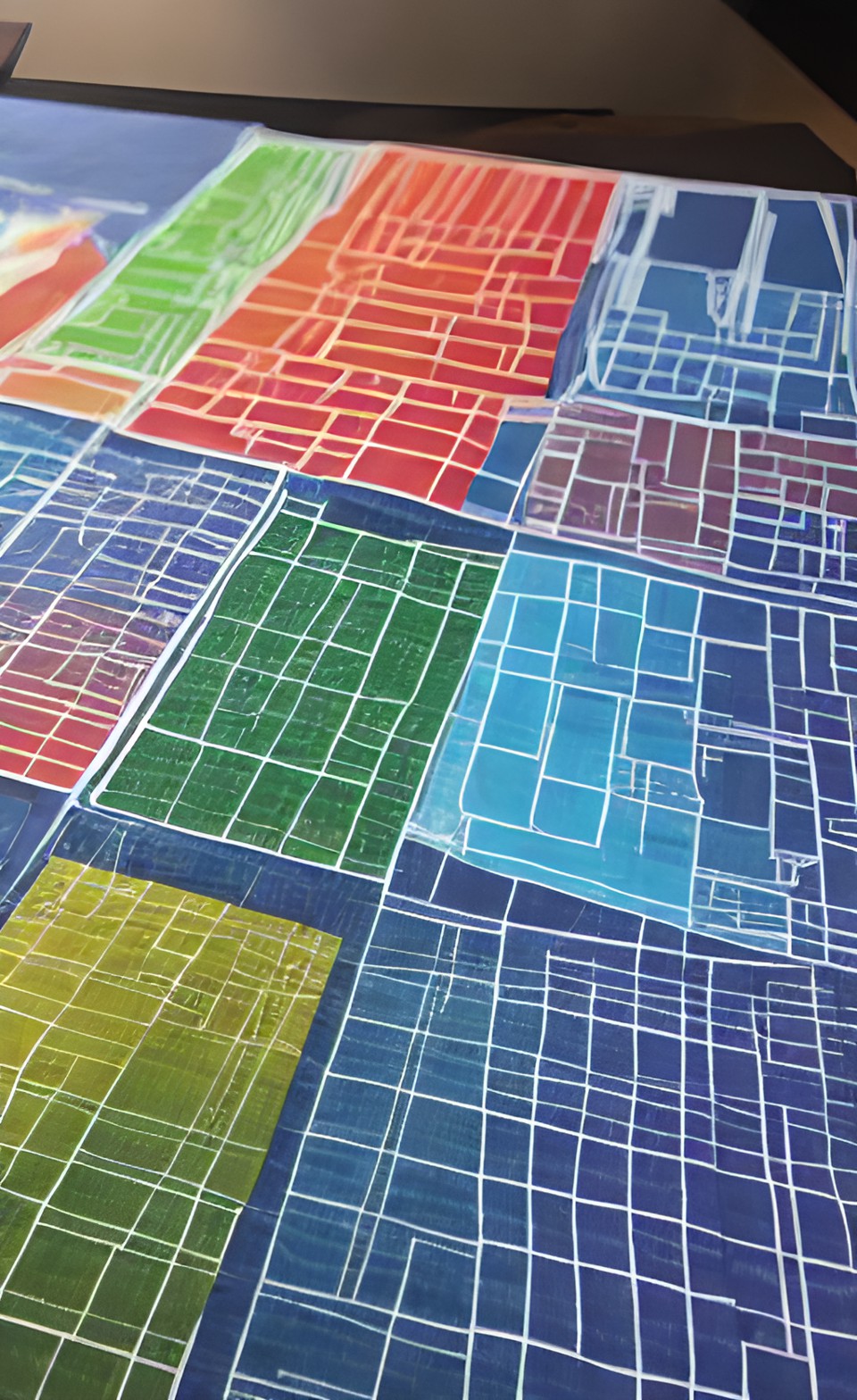- Air Homepage
- Alberta Air Quality
Redefining Alberta air quality, the Air Monitoring Directive sets new standards
This Alberta Air Quality page provides a plain-language interpretation of the Alberta Air Monitoring Directive (AMD), a set of rules and guidelines for monitoring and reporting air quality in Alberta, Canada.
Alberta's Mandatory Air Quality Rules: The AMD Blueprint - How do you calibrate your equipment or submit your annual report according to the Air Monitoring Directive? To ensure your air data is accurate and legally compliant, unlock this plain-language guide to the AMD's nine critical chapters.
The AMD is a checklist for Alberta to make sure the air here stays healthy. It makes sure everyone uses the same standards when measuring air pollution, so the data is accurate and fair.
AMD rules apply to organizations that monitor air pollution and covers where to monitor air, how to collect and report data, and how to make sure the equipment works. The AMD has chapters that cover different topics, like:
- Choosing where to put air quality monitors.
- Calibration of air pollution equipment.
- Reporting on air quality (Chapter 9).
Scientists, the government, and industries can work together to keep the air clean, protect our health, and follow environmental laws. The current document is available in its legal language on this provincial webpage and AMD's purpose is to ensure:
Minimum Standards: The AMD outlines the minimum requirements for collecting and reporting air quality data.
Data Quality: It establishes the quality of air data and makes it comparable between monitoring sites. It's a good idea to collect data continuously and keep an eye on the data using a Quality Assurance Plan (QAP)
Guidance: The AMD provides quality assurance and reporting requirements for operators of monitoring equipment, auditors, and regulators.
It also specifies acceptable methods for air monitoring and reporting required by Alberta's Environmental Protection and Enhancement Act (EPEA), Code of Practice regulations, or other air monitoring activities. The CEMS Code, Stack Sampling Code, and Substance Release Regulation may also apply.
Air monitoring data helps:
- assess environmental quality,
- identify trends,
- ensure compliance with guidelines and standards,
- support air quality dispersion modelling,
- and inform policy decisions.
The data must be consistent, high-quality, and reliable.
Throughout the AMD, mandatory requirements are italicized and legally binding. "Shall" and "must" imply strict requirements, while "should" and "may" imply recommendations. This applies to text in the official documentation, rather than these brief summaries provided on StuffinTheAir.com
If you're a facility owner or operator, approval holder, airshed official, or in other role covered by the AMD you probably know what it is like to be responsible for air monitoring. You've see now the AMD outlines monitoring, reporting, and maintenance requirements. Data collected and formatted according to AMD requirements will only be accepted by the regulator, which oversees environmental compliance.
If you're new to these tasks, the AMD articles provided in the chapter-links below should get you started along with these guides:
Government Resources
• Alberta Environment and Protected Areas website
• AMD technical guidance documents
• Regulatory updates and notices
• Compliance assistance programs
Industry Resources
• Industry association guidelines
• Best practice documents
• Technical specifications
• Training materials
Air Monitoring Directive components and amendments
The current AMD was released in 2016. It replaced the previous one from 2006, which replaced the first AMD from 1989 by a series of amendments highlighted below and available in full detail in Chapter 1, Section 2.
There are several parts to the Air Monitoring Directive (AMD), including: AMD 1989 is the original version of the directive, titled "Air Monitoring Directive: Monitoring and Reporting Procedures for Industry" and was in place until it was amended in 2006.
Looking for actionable steps? Here is an overview of the chapters:
An introduction to AMD (Chapter 1): The chapter welcomes you to the AMD, while
Chapter 2: has been provided to cover the planning for Alberta's ambient air monitoring program, an important feature in keeping Alberta air quality in good shape.
The Site Selection Chapter (Chapter 3) explains how to select monitoring sites and what sampling systems you need.
Chapter 4 (Monitoring): This chapter provides introductory details for monitoring requirements.
Chapter 5 is about the quality assurance system you will need for getting monitoring data that meets the standards.
The Data Quality Chapter (Chapter 6) looks at maintaining the quality of ambient air monitoring data.
Calibration Chapter (Chapter 7): This chapter goes into instructions for calibration of equipment .
Chapter 8 (Audits): It's about auditing ambient air monitoring systems, procedures and equipment.
The Reporting Chapter (Chapter 9, first six sections) outlines the reporting requirements to meet. The next five sections provide instructions for industrial air emissions reporting on an annual, monthly or incidental basis. Pay special attention to section 7 where the Alberta Annual Emissions Inventory Reporting is outlined in greater detail.
That concludes Part 1 of Chapter 9 (reporting on behalf of industry). Part 2 provides reporting requirements for Alberta airshed operators. Airsheds cover regions of Alberta with a higher density of industry than more remote areas of the province and they monitor and report the data on behalf of several industries at once, which is easier for everyone.
All of these components are important to the Alberta air quality monitoring and reporting procedures, to help make certain that data collected is reliable. Refer to the AMD chapters above for more on each area of concern.
There have been periodic updates to the Air Monitoring Directive. This is the current AMD Introduction. Each chapter has a release date and effective date, plus an amendments section. AMD's website has updates, and stakeholders can give feedback.
History of AMD amendments to improve Alberta air quality
Several amendments have been made to the Air Monitoring Directive (AMD) as officially listed and described at length in Section 2. Various sections have been updated and replaced. For instance:
 Alberta documentation requirements updated
Alberta documentation requirements updated- There have been numerous updates to the Air Monitoring Directive (AMD).
- AMD 1989 is removed from the title page, new terms are added to Appendix A, and Section 1.0 is updated with AMD 1989 and AMD 2006.
- The AMD components are now listed with their effective dates in Section 2.0, and Section 2.1 has a few changes.
- The AMD Introduction lists amendments in Section 2.1.1, while Section 2.2 details changes to AMD 1989 and 2006.
- "Required operating range" is defined in Appendix A, and a correlation table is in Appendix B.
- AMD Introduction replaced Guidance for Use, Purpose, and Data Confidentiality in 2014.
- Site Selection, Monitoring, Calibration, Audit, and Reporting replace AMD 1989 and 2006.
General air quality requirements
The Air Monitoring Directive (AMD) outlines these general requirements:
Dispute Resolution: If there's a conflict between submitted documents or data and AMD's terms and conditions, AMD takes precedent.
AMD rules apply if guidance documents contradict AMD rules.
The AMD doesn't affect rights or obligations granted under an approval.
The responsible person must provide the Director with documents, records, and data related to air monitoring, reporting, or maintenance.
Mentioning specific products or technologies in the AMD doesn't mean they're endorsed or recommended.
AMD terms and conditions are severable, so if one part is invalid, it doesn't affect the others.
If the responsible person transfers monitoring, reporting, or facility ownership, they have to hand over all records and data.
Closure of business: If the business closes, the director should be notified right away.
Alberta's air monitoring and reporting standards are designed to be clear, fair, and compliant. But they are not always simple. If you need help with this...
Calvin Consulting creates Quality Assurance Plans (QAPs) for Alberta Environment's Air Monitoring Directive (AMD). We also assess the air quality in the area when needed so clients can pick the right spots for monitoring. Calvin Consulting uses your information to develop AMD QAP, following Alberta AMD guidelines. And then we provide a document that suits your operations and needs. Please contact Barry in the Calgary office for more guidance...

You'll be glad you did. In essence, my team can help you meet regulatory requirements and make sure the process is accurate and legal.
Confidentiality and privacy
The Regulator follows Alberta's privacy laws when it collects air data. You can ask the Director for confidentiality if something is a trade secret. However, this can't delay submitting the data. You still have to follow all the rules. Transparency and sharing air data are good.
Send feedback or questions about the AMD to AMDFeedback@gov.ab.ca or mail to Air Policy Branch, Alberta Environment and Protected Areas, Edmonton, Alberta. Find out more at alberta.ca.
Appendices
Chapter 1 of the AMD concludes with two appendices. The first is a list of over 200 definitions and it would be best to check the original document for any that you need.
Appendix B contains a large table that should also be examined in the original, but can be summarized as follows:
This table shows how Alberta's Air Monitoring Directive (AMD) has changed over time. Here's how it works:
How does the AMD work? It provides a set of rules and guidelines for monitoring Alberta air quality.
What's the point of this lengthy table? It shows how the AMD has evolved over time by showing what sections were added, removed, or updated.
 The winds of change
The winds of changeColumns in the table:
1 - AMD 1989: Elements from the original directive.
2 - There were amendments to the 1989 AMD made in 2006 and which sections were changed.
3 - The 2016 AMD replaces or updates sections from the 1989 AMD or its 2006 amendments.
The dates when the 2016 AMD rules went into effect are listed in Column 3 and the 1989 AMD and its 2006 amendments were in effect before that.
The section titles in the first column describe the specific areas covered in the directive, like monitoring, reporting, and quality control.
How Can You Learn From This Table?
Here's how the AMD has changed over time, which helps you understand the Alberta air quality regulations in their current form.
To follow the current rules, you'd refer to the 2016 AMD since it's the one now in effect.
Note, though that earlier AMD versions (the 1989 one and its 2006 amendments) still applied until 2016.
This table is like a historical roadmap of how the provincial government has managed and monitored Alberta air quality over the years, and it helps keep rules current and effective in protecting the environment.
Updates and further refinements can be expected in the future.
In Alberta, the Air Monitoring Directive replaces previous directives and incorporates changes to monitoring and reporting.
Monitoring, data collection, and reporting requirements are in the directive. In addition, it outlines the roles and responsibilities of stakeholders.
Do you have concerns about air pollution in your area??
Perhaps modelling air pollution will provide the answers to your question.
That is what I do on a full-time basis. Find out if it is necessary for your project.
Have your Say...
on the StuffintheAir facebook page
Other topics listed in these guides:
The Stuff-in-the-Air Site Map
And,
Thank you to my research and writing assistants, ChatGPT and WordTune, as well as Wombo and others for the images.
OpenAI's large-scale language generation model (and others provided by Google and Meta), helped generate this text. As soon as draft language is generated, the author reviews, edits, and revises it to their own liking and is responsible for the content.





New! Comments
Do you like what you see here? Please let us know in the box below.